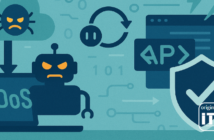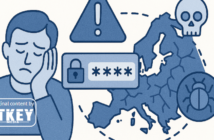The post was originally published on the blog Feld Thoughts.
Most people, unless you work either for the government or an infectious disease “organization” (non-profit, hospital, health care system) probably had not heard the phrase “contact tracing” until a month or so ago.
I now hear and see the phrase “contact tracing” everywhere.
About a month ago, as I started working on COVID-related stuff, the phrase came up regularly on the private side as a partial solution to the problem of “opening things back up.” It was often phrased as “it will be hard to open anything up until we have enough testing and contact tracing.”
For about a week, I couldn’t figure out why many of the people I was interacting with seemed to dismiss my ideas and concerns about contact tracing. Then, in a conversation, someone in government explained what the government’s historical view of contact tracing was, which is a well-defined and regularly executed completely manual process.
A giant lightbulb went off in my brain as I realized two things were happening. A bunch of people who were hearing the phrase “contact tracing” figured “yup – we’ve got that under control” (meaning they already had a manual contact tracing effort in place or about to be launched). The rest were thinking “the tech people want to automate and digitize the manual contact tracing activity – that’ll never work and it’ll create huge security and data privacy issues.”
So, I, along with everyone I am working with, started calling it “Digital Contact Tracing.” That helped some, especially as we described its relationship to Manual Contact Tracing. But, there was still too much explanation of Manual Contact Tracing vs. Digital Contact Tracing. And, confused continued to abound.
The phrase “Digital Contact Tracing” started evolving. The ACLU (American Civil Liberties Union) wrote a great white paper titled Principles for Technology-Assisted-Contact-Tracing which generated a clever acronym (TACT). I also saw the phrase “Digital Contact Tracing and Alerting” being used.
The ACLU offers 14 basic principles for evaluating a TACT, which includes:
|
Harper Reed recently has put up a short post titled Digital Contact Tracing and Alerting vs Exposure Alerting that lays out the history of the concept and renames it “Exposure Alerting.”
| Harper Reed, a Senior Fellow at USC Annenberg Innovation Lab wrote, ‘Digital contact tracing and alerting as defined by Apple and Google, and many of the protocols don’t actually do “contact tracing” as expected by epidemiologists and public health officials. What these apps, protocols, etc. do is alert a consumer to potential exposure.
Alerting to exposure is very important. It fits nicely into the traditional world of contact tracing (at the very very beginning). However, it is not synonymous. To use the same words to describe these two concepts isn’t helpful. This is why I have started calling this type of tool, “Exposure Alerting.”’ |
Exposure Alerting is the correct phrase for Digital Contact Tracing. It is clearly additive to Manual Contact Tracing (or simply Contact Tracing as most of the non-technical world refers to it.)
So, from here on out, I think we should call this activity Exposure Alerting. I think we would have saved a lot of time and energy if we had come up with the right name from the beginning. But, since this is going to be with us for a very long time, let’s start now.
Recently the Ministry of Digitalization in Poland has launched a tracking app ProteGO Safe. Over 30,000 Poles have already installed it. However many are still hesitating due to privacy reasons.

Brad Feld has been an early-stage investor and entrepreneur since 1987. He is a co-founder at Foundry Group, and Techstars. Brad is a writer and speaker on the topics of venture capital investing and entrepreneurship.
Brad is also the author of a number of insightful must-read books – find them here.
Brad holds a Bachelor of Science and Master of Science degrees in Management Science from the Massachusetts Institute of Technology. Brad is also an art collector and long-distance runner. He has completed 25 marathons as part of his mission to finish a marathon in each of the 50 states.
Find more blog posts by Brad on his blog Feld Thoughts.





